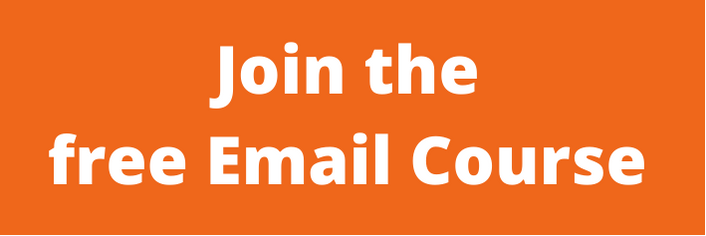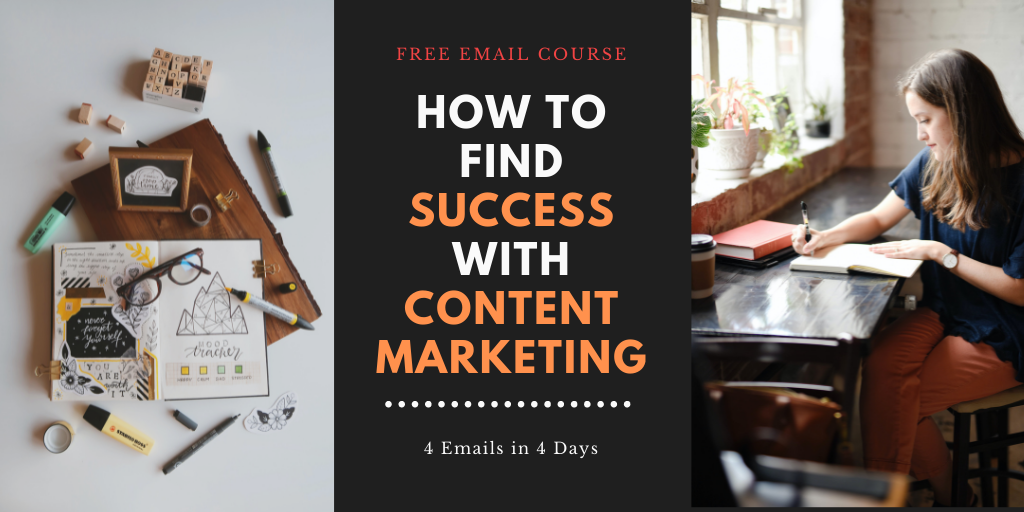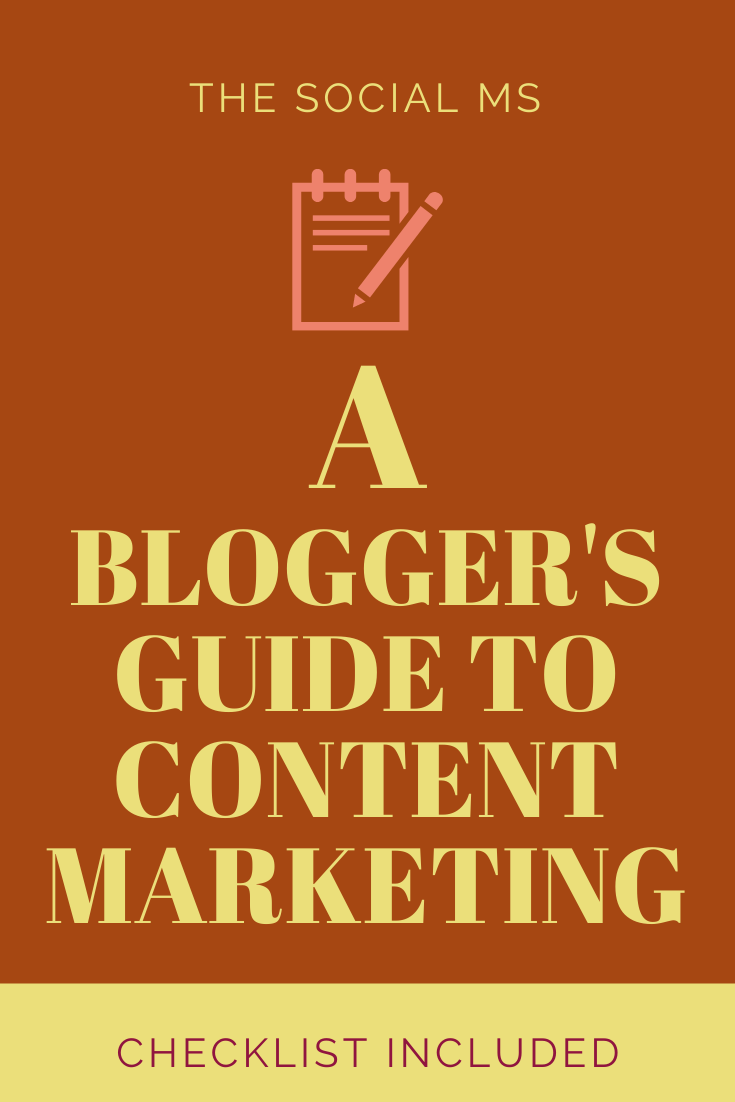You’re a blogger, right? That means you write blog posts, get traffic, sell products, and make money. What do you need to know about Content Marketing?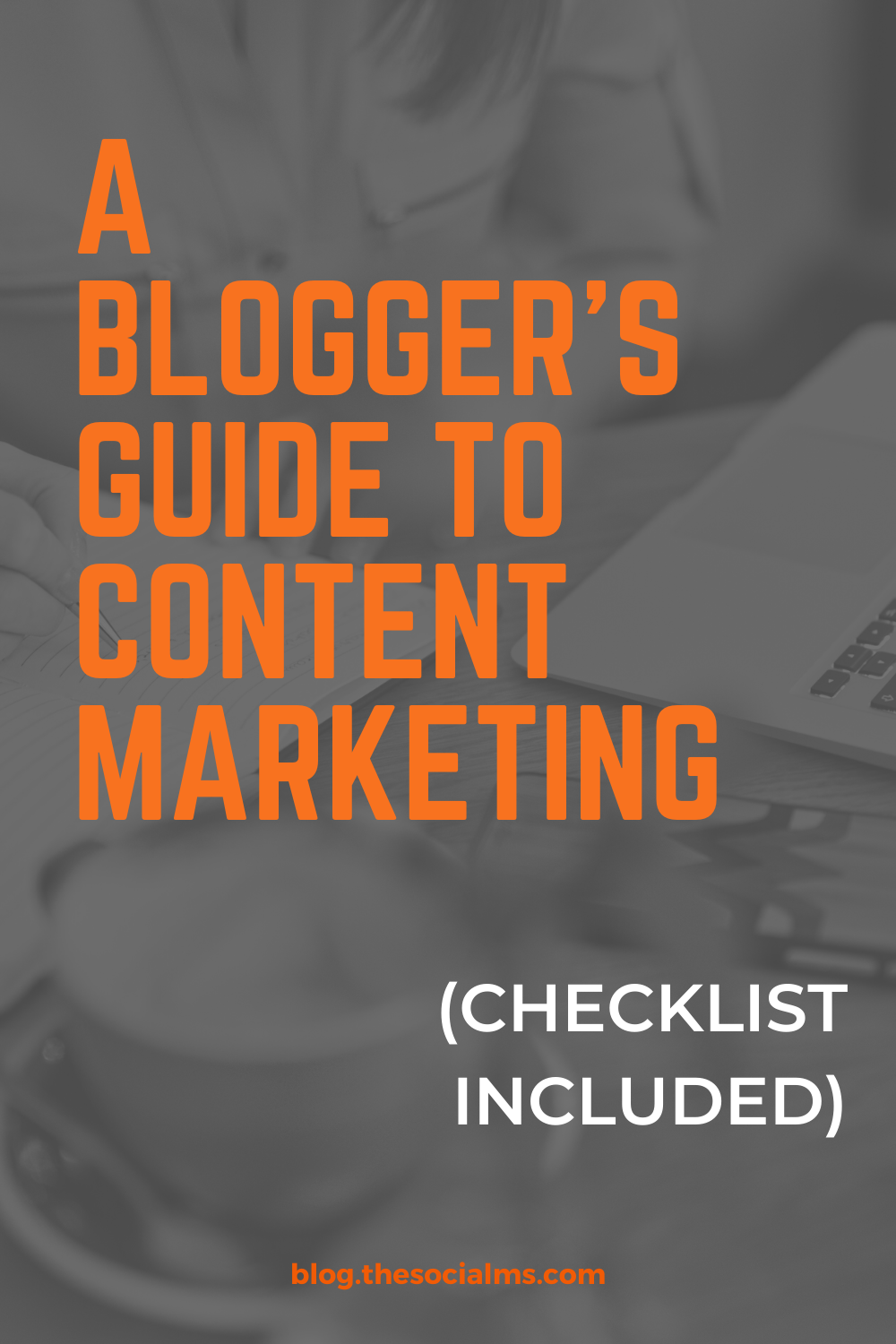
A lot. Content marketing and blogging are closely related and as a blogger, you will need to learn content marketing to almost the full extend. Why? Because blogging is content marketing – and because of that, you need to know how content marketing works!
Luckily, content marketing is a process, that you can simply adapt to your blogging routine – and once you do that, you will automatically become a better and more successful blogger. In this post, you will learn all you need to understand about content marketing for your blogging routine!
(If you are a total beginner, I recommend that you start with this post: How to start a Blog in 2020 (Ultimate Checklist))
Before you read on - we have various resources that show you exactly how to use social networks to gain massive traffic and leads. For instance, check out the following:
FREE Step-by-Step Twitter Marketing GuideFREE Pinterest Marketing Ebook
Why should a blogger know about content marketing?
That is a good question. To answer this, you first need to understand what content marketing means. Let’s start with a definition:
“Content marketing is a strategic marketing approach focused on creating and distributing valuable, relevant, and consistent content to attract and retain a clearly defined audience — and, ultimately, to drive profitable customer action.” – Content Marketing Institute
That’s taken straight from content marketing institutes post. Now how does that relate to blogging?
As a blogger, you create content pieces. These are your blog posts. And if you know anything about blogging, then you should know that these pieces should be valuable, and relevant to your target audience and that your content flow should be consistent so that your blog can attract and retain your target audience.
You also know that you should work on distributing your content – that means you need to attract people to find your content via search engines, or to make them discover your content via social media. Or even to make them see your content through advertising (not as a beginner though, due to the high price tag involved, this only makes sense in very special cases).
Your ultimate goal as a blogger is to drive profitable customer action. You want to make money – either by driving sales for products you created or for third-party products via ads and affiliate marketing.
In summary, as a blogger, you create a content stream that is valuable, relevant, and consistent to a specific audience. You distribute that content, and you ultimately drive profitable customer action.
Sound familiar?
That’s right – that is why, as a blogger, you need to know about content marketing. As a blogger, you already are a content marketer. So you need to know content marketing principles and how they apply to blog!
Hey, before you read on - we have in various FREE in-depth guides on similar topics that you can download. For this post, check out:
FREE workbook: CREATE AWESOME BLOG POSTSFREE Beginner's Guide: START A BLOG
The same is true the other way round: Blogging and Blogs are one of the most important tools for content marketers today:
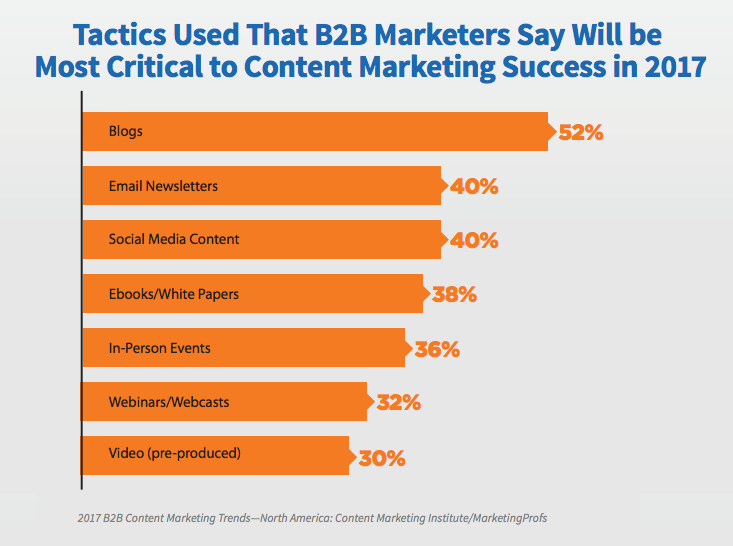
Blogging is important for any content marketer. Source: CMI
Now that we know why a blogger needs to understand content marketing, here are the most important goals of content marketing and how they apply to blogging:
Goals of content marketing – and how they apply to you as a blogger:
Here we are going to look at the goals of content marketing, before we are going to derive a content marketing process that you can, as a blogger, directly use for your blogging activities!
In content marketing, there are 4 important goals: Awareness, reputation, distribution, and revenues.
Let’s look at these goals from a blogging perspective:
1. Distribution (Traffic)
The first goal of content marketing is to be able to distribute your content to your target audience. No content marketing strategy makes sense when you aren’t able to distribute your content to your target audience. Without eyes on your content, there is no need to create content at all.
One important thing about content marketing that everyone needs to understand is that content marketing needs a distribution strategy and that there is often a longer timeframe employed until that distribution strategy works to its full extend. However, once that distribution strategy has really been developed and opened up the market, content marketing becomes a massively scalable marketing strategy because every piece of content can be instantly distributed to a massive audience.
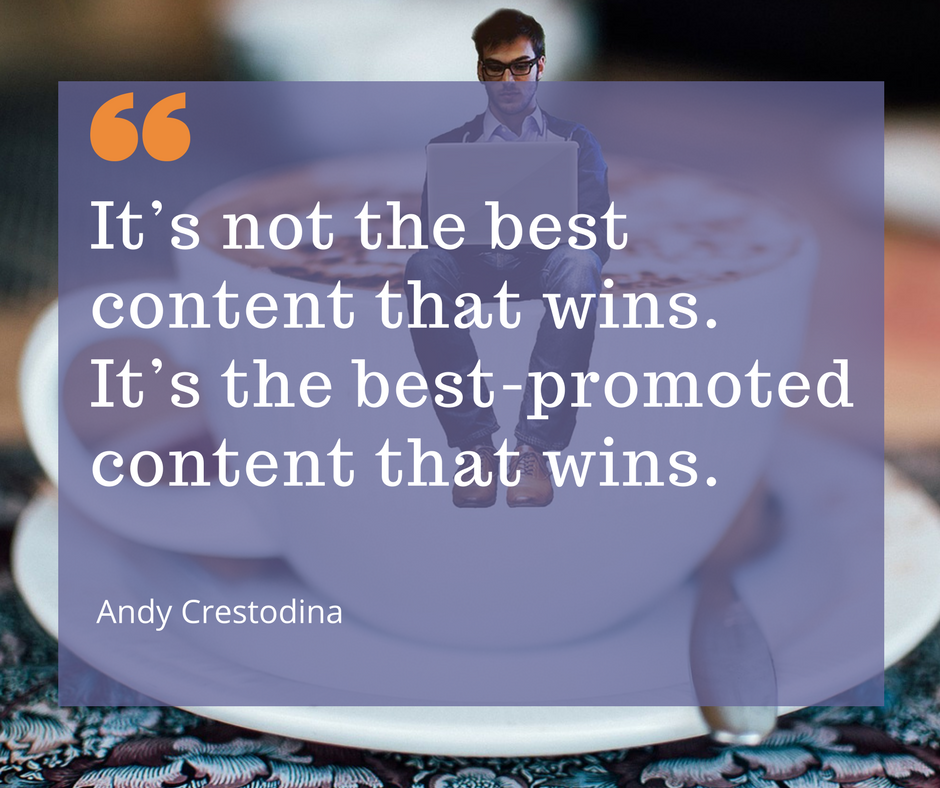
With blogging, this means you need to work on your distribution as much as your content. You need to learn about SEO for search engine discovery, you need to learn about social media marketing for social media distribution. You need to grow your audience via growing an email list, and you need to think about all of this from DAY 1!
2. Awareness
The second goal of content marketing is creating awareness for yourself or the brand you are marketing. So, if you would be working on a content marketing strategy for a company, your goal would be to achieve the state of being known within the company’s target audience. If you would be working for a motorbike company, your goal would be to become known among motorbikers.
As a blogger, your company is… yourself. You define your target audience and you want your blog and yourself to become known within your target audience. You want your target audience to react with a knowing “Yes, I do.” when being asked, “Do you know Jenny’s motorcycle blog?” That’s your goal.
3. Reputation
Awareness as a goal for content marketing simply isn’t enough. You don’t just want to be known. You want to be adored. Or at least be regarded highly. As a content marketer, your goal isn’t just to generate awareness, you want to create a positive feeling.
To stay within the example of the motorcycle company, your goal as a content marketer is to generate the image of producing very reliable, easy to ride, or very sporty motorbikes. And to be well regarded among bikers who are interested in these categories of motorbikes.
As a blogger, you want your target audience to like you, to see you as an expert, to adore you for your adventures, … If we are talking about Jenny’s motorcycle blog, you don’t just want someone to answer with “Yes, I do.” to the question of “Do you know…”
You want the answer to be “Hell yeah, she’s so great, she saved me 100s of Dollars with her repair tutorials!”
4. Revenues, Money, Sales
The ultimate goal of any marketing strategy, not just content marketing, is to increase the company’s revenues. By directly driving sales, by opening up new markets, by generating desire and need within the target audience, …
The ultimate holy grail within marketing are massively scalable marketing strategies, and content marketing is one of those strategies.
Here is what I mean by that: Content marketing usually takes some time and effort (and sometimes money) to implement and a while to get running to the full extent of its capabilities. That is an initial investment.
But once you set everything up, get everything running the way it should, the continued investment stays roughly the same, while the continued revenues that can be generated from this will increase immensely over time.
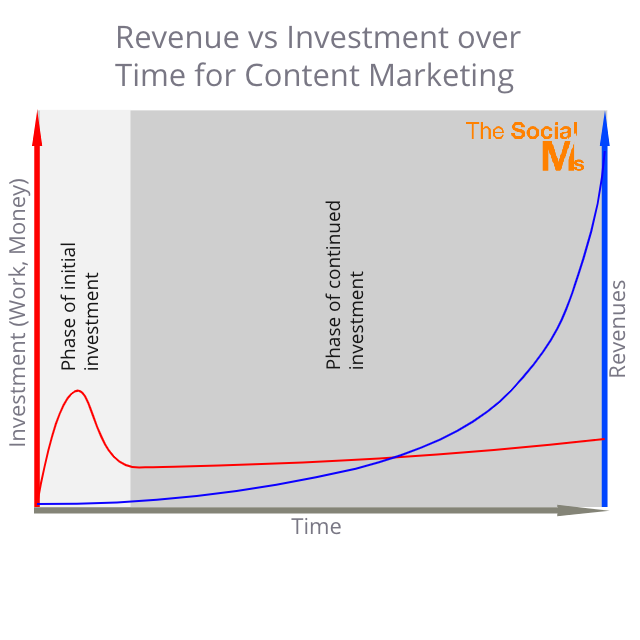
As you can see from the graph, the revenues that can be generated from a company from a well-done content marketing strategy are almost limitless.
Now, this is also an amazing thing about blogging when you see it as a business model.
You make an initial investment as a blogger, you set up a blog, you start writing posts, you learn a lot of new things like SEO and social media distribution.
From there, the investment and effort stays roughly the same. You write posts, you distribute them, you generate traction, and you connect with your audience. Once you start making money, there is no limit to what you can achieve.
Now the great thing about blogging is that all the tools you need are available at low prices. You can set up your blog at below $10 per month. Email marketing can be had for 0 dollars when you are starting out. SEO and social media distribution is available for free. And so on.
The investment needed for your blogging business is your own time and work.
The Blogger’s Content Marketing Process
In this article, I’m not going over how to start a blog in 2020 – I’ve already covered that in my recent article.
This article is about the continued content marketing process that every blogger needs to use for blogging success.
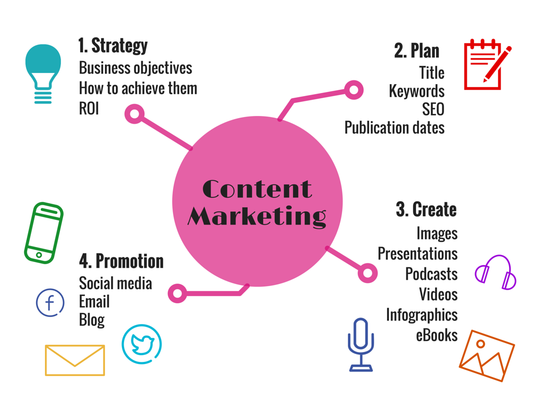
Image has been created for this post by Nicky Pasquier
This process is derived directly from the content marketing strategy, and it consists of 3 relevant areas: Content creation, content distribution, and optimization.
Content creation process for Bloggers
The content creation process for bloggers has three relevant goals derived directly from the content marketing definition:
- Value
- Relevance
- Consistency
To be able to provide content and a consistent content stream, that stays true to these goals, you need to start early on. The following are tasks that you need to complete either once or continued tasks that you will have to do over and over again!
1. Before you start your blog, you need to have an idea about what your target audience looks like. Who are the people you want to read your blog? What are their interests? What type of content are they looking for? One-time task.
Write this down, and put it on a piece of paper that you always pull out of your desk whenever you are stuck. You only need to do this once.
2. Create a content calendar. How often can you and how often do you want to publish. A general rule of thumb is to publish twice a week when you are starting out, but only in rare cases should you publish less than once a week. One-time task.
The goal of your content calendar is to put a timeframe to your blogging activities. You should publish often enough to make an impact, but not too often for your content to feel rushed.
Check out content pillars, content clusters and how you can use them to make your content creation process more strategic!
3. Stay up-to-date with your competition: You are creating content for a specific audience – but so is your competition. Other blogs, online magazines, offline magazines, people who answer questions on Quora are already producing content around your topics, and you should have a good idea of what they are posting. You don’t have to read every post – you will develop a feeling for this soon. This should be part of your daily routine.
This will make it easier for you to produce content that competes, but also to find ideas for posts.
(3.5 Do keyword research for SEO: This is part of your distribution strategy, but it helps with your content creation process. Details can be found in the next section. Look for keywords for every post you create!)
4. Collect content ideas: You should always have more ideas for content than content pieces you actually produce. So whenever you have an idea for a content piece, write it down and save it for later. This is a continuous task.
5. Create Content: Reserve sufficient time in your schedule to work on content pieces. Write the content. This is a continuous task.
6. Edit content: Use a tool like Grammarly to edit your content and improve your writing. This will allow you to create much easier to read content without losing content depth. This is a continuous task.
7. Create images: Images make every content piece easier to read. For every content piece, create some explanatory images. You can use tools like Canva to help with this. Do this for every finished content piece.
These are the steps for your content creation process. Don’t publish your post yet, as your distribution strategy does require you to do some additional steps before post-publication.
Your distribution strategy – the process for bloggers
The second part of the content marketing process for bloggers is your distribution strategy. Again, we’re going to start with some tasks that you will have to do once and follow with some that are continuous tasks.
8. Learn about the basics of SEO and learn the basics and the first SEO tactics you need to use for distributing your content this way. You only need to do this once!
To get a hang about the basics of SEO, listen to this podcast episode: What is SEO.
To learn about keyword research, read this article: The Blogger’s Guide to Keyword Research
For linkbuilding tactics, start with this post: 3 SEO Hacks every Blogger should know.
9. Learn about Social Media Marketing and decide which networks you want to use. You only need to do this once in the beginning – you will reassess your decision constantly under optimization.
Our recommendation is to use no more than 2 networks at the beginning (Pinterest and Twitter).
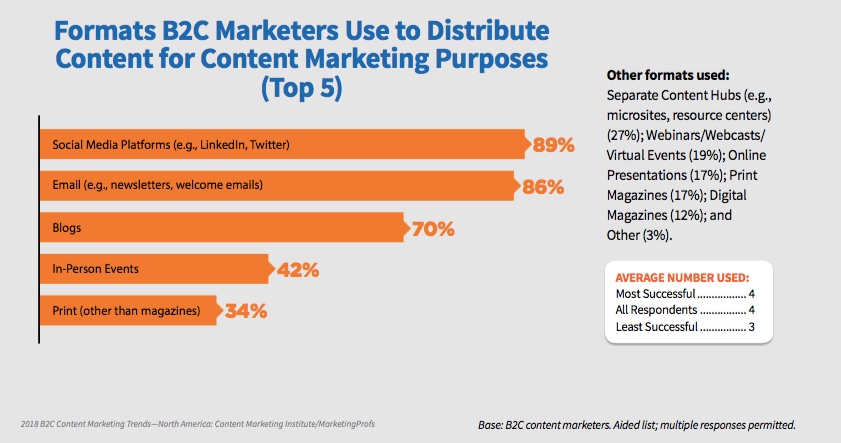
Source: Content Marketing Institute
For a good start with Twitter, see our posts here, and here.
For a totally FREE email course, check out this Pinterest email course.
10. Research keywords that are relevant to your niche, so that you can produce content pieces directly for keywords. This was also mentioned in 3.5 above as this will also be part of your content creation process. Every post needs to be optimized for at least one keyword. This should be part of your weekly routine.
11. Before you publish a post, use Yoast SEO to optimize your post for a specific keyword. Yoast SEO is a WordPress plugin, that gives you clear hints on how to optimize a blog post for SEO purposes. This needs to be done for every post you publish.

Yoast in action
12. Before you publish a post, optimize your post headline for social media. This needs to be done for every post.
For some help with creating good headlines for social media, see this post here.
After optimizing your post for SEO and your headline for social media sites, your post is ready for publication. You can now continue with your distribution strategy after publishing
13. Create a social media post and schedule or post it to every one of your social networks for an initial push in traffic. If you use Twitter and Pinterest – create a Pin and a Tweet. If you have a Facebook fanpage, schedule a post there, and so on. After each publication.
Additional distribution: Email list growth
Your distribution strategy doesn’t end with generating traffic, you will also need to work on the one distribution method that sooner or later becomes every blogger’s bread and butter: Email list growth.
14. Learn the basics of email marketing. Needs to be done once!
Learning the basics of email marketing is absolutely necessary to use email marketing to it’s highest potential. Read this post for a good start!
15. Sign up for and set up your email marketing tool. For a free start, use Mailchimp, which is free for the first 2000 subscribers. Done once.

Mailchimp has a free plan for up to 2000 subscribers
16. Create a lead magnet and implement a signup in return for your lead magnet on your site. Needs to be done once, you can use more then one. Will be assessed under optimization.
For some information on what a lead magnet is, and how to create one, see this post.
17. Send newsletters at least once a week. Send your latest blog posts, additional information, and later you can also send information about your products. Continuous task.
For some ideas on what you can send to your email list read: 15 Email Ideas You Should Send to Your Subscribers (Without Boring Them To Death)
This is it for your distribution process. But we are not finished yet. Next is your optimization process.
Metrics, Checking Results, Optimization
One important part of content marketing is optimization. Things are not just set up and then they run, you need to reassess the situation and make changes. The first step is to know what is going on. Which also results in your first task that you need to complete.
18. Install and activate Google Analytics and Google Search Console for your blog. Done once
Without these two tools, you won’t see your traffic or your SEO results. See this post for more information: How to make your WordPress blog SEO ready.
19. Track all your statistics constantly. This is too much to put into separate tasks. Data you need to track includes:
- Traffic for each traffic source (Social networks, Search, Email, …)
- Clickthrough rates on email, social media posts
- SEO results
- Lead magnet performance
- …
20. Continuously make changes to every part of the content marketing process – are your social network posts not performing? Make changes to your headlines. You don’t get many email subscribers? Create another lead magnet. You get a lot of SEO impressions, but no clicks? Work on the meta descriptions, …
Content marketing success relies on a lot of trial and error and optimization – and every little improvement counts.
Final Words
The above process is the complete content marketing process adapted for bloggers. Follow the above steps for content creation, distribution, and optimization, and you will grow your traffic quickly and cover all major areas of content marketing with your blog.
Is your content marketing not working out as it should – or you hoped for? We can help.
Join us for a free email course about content marketing.
Learn what is missing in your content marketing that is costing you all chances of content marketing success.
find out why content distribution is the key to reaching a targeted audience – and get a checklist for your content distribution for each piece of content.
Find out how you can create more content without working like a horse.
Learn why your content is not getting the reactions, shares, and conversions you hoped for – and what you need to make it all work!
Are you in? Join us here for 4 days and 4 emails!


